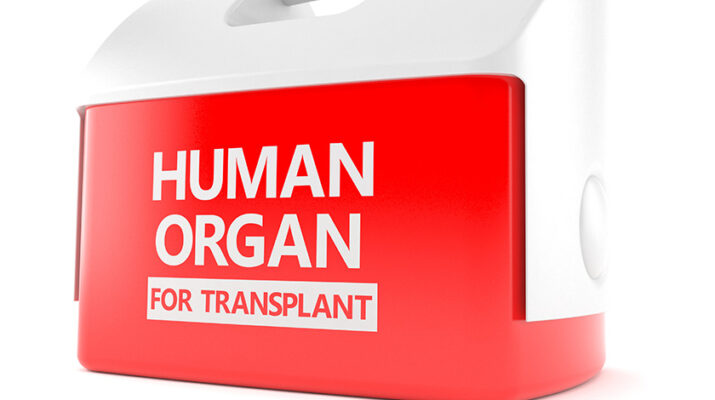By Deborah Jeanne Sergeant

Most people don’t think much about organ donation unless they or a loved one are waiting on an organ recipient list or they work in a role like Nancy Ryan, director of development at Finger Lakes Donor Recovery Network.
Because 500 New Yorkers die every year while waiting for an organ donation, Dorgam Badran wants more to sign up. He is a critical care physician at St. Joseph’s Health and chairs the organ donor council at St. Joseph’s Health.
“How much consolation it gives the family that their loved one became a donor,” Badran said. “It creates a legacy through their loved one — a gift anyone can give that has no cost. It can be tremendously powerful when a terrible loss becomes a gift.”
Unfortunately, too few people do so and as a result, 17 Americans die daily while waiting for a lifesaving transplant. Still more await transplants that could enhance their lives. Obtaining designation as an organ donor is simple to do, but for some hard to think about.
“We live in a society where it is not so easy to think about our own demise,” said Ryan.
FLDRN is the federally designated, nonprofit liaison between donors and recipients awaiting donation. “We put off making wills until way too late. We put off thinking about our own death as long as we can. When something unexpected happens to a middle-aged or younger person, the family is caught off-guard. A 30-year-old doesn’t make end-of-life plans. Every day is a gift to every person. Being prepared with what you want is important.”
FLDRN serves 20 counties upstate facilitating organ, eye and tissue transplants.
Anyone 16 or older may sign up to become a donor. One means of designating as a donor is through the DMV when applying for or renewing a driver’s license. Ryan said that is the most common means. Potential donors can also sign up through the voting registration form. New York is the only state with this option available. New Yorkers applying for or renewing their health insurance benefits through the New York State of Health Insurance Exchange can register as a donor. Yet another is https://donatelife.ny.gov/register, where people can sign up. All methods are free.
Ryan said that FLDRN has been working to promote donation by making QR codes available in the community for people to scan and access the site.
“We’re getting our hospital partners to put this link in the patient-facing medical record systems,” Ryan said. “On those patient medical record accounts, many put the link to sign up as a donor in those systems, which is fantastic. It’s so relatable.”
When a person passes away or is imminently about to, the medical providers are required by law to contact FLDRN. The organization’s organ procurement coordinators manage the medical side of patients and decedents to match donors with recipients. The family coordinators help honor the end of life designations and speak with family members if the deceased have not registered.
Although donors can make their wishes known using documents such as a driver’s license, last will and testament or health care proxy, these documents may not be readily available when donation decisions are made. Ryan encourages donors to use the electronic registry and to also make family members aware of the designation decision.
“You want a determination about what will happen after you pass away,” she said. “If you don’t put it in writing and if your family doesn’t know if you wanted to be a donor, they’ll be asked by an organ or tissue agency staff member if they’ll be interested. What a difficult conversation that is.”
Donation does not always mean a deceased donor. Be the Match (https://bethematch.org/about-us) seeks registration for living donors for people to donate bone marrow but not organs. In upstate New York, Upstate University Hospital in Syracuse represents the only transplant programs for kidney or pancreas transplants.
Potential donors can register with the National Kidney Registry (https://www.kidneyregistry.org) so people with end-stage kidney disease will not require a regimen of dialysis to survive. The average life expectancy of someone on dialysis is five to 10 years.
To promote more lifesaving and life improving organ donation, the New York Legislature passed the “New York State Living Donor Support Act” which takes effect in April. The state’s health commissioner will set expenses covered for reimbursement. Funding from employee sick leave, the National Living Donor Assistance Program and other sources will first providing coverage and the state program picking up any remaining expenses.
“With expanded assistance for those inspired to become organ donors, I am confident this new law will help more New Yorkers give and receive the gift of life,” said State Sen. Gustavo Rivera (D-the Bronx) in a statement. Rivera sponsored the bill in his chamber.
According to the Finger Lakes Donor Recovery Network:
• Every nine minutes, someone is added to the national transplant waiting list.
• More than 5,000 people died in 2022 while waiting for an organ transplant.
• One donor can save up to eight lives through organ donation and could improve the lives of up to 75 more through tissue and cornea donation.
Waiting… and Waiting
The number of people waiting for a life-saving organ transplant:
Nationally: 104,000
New York state: 8,125 (7,000 are waiting for a kidney)

